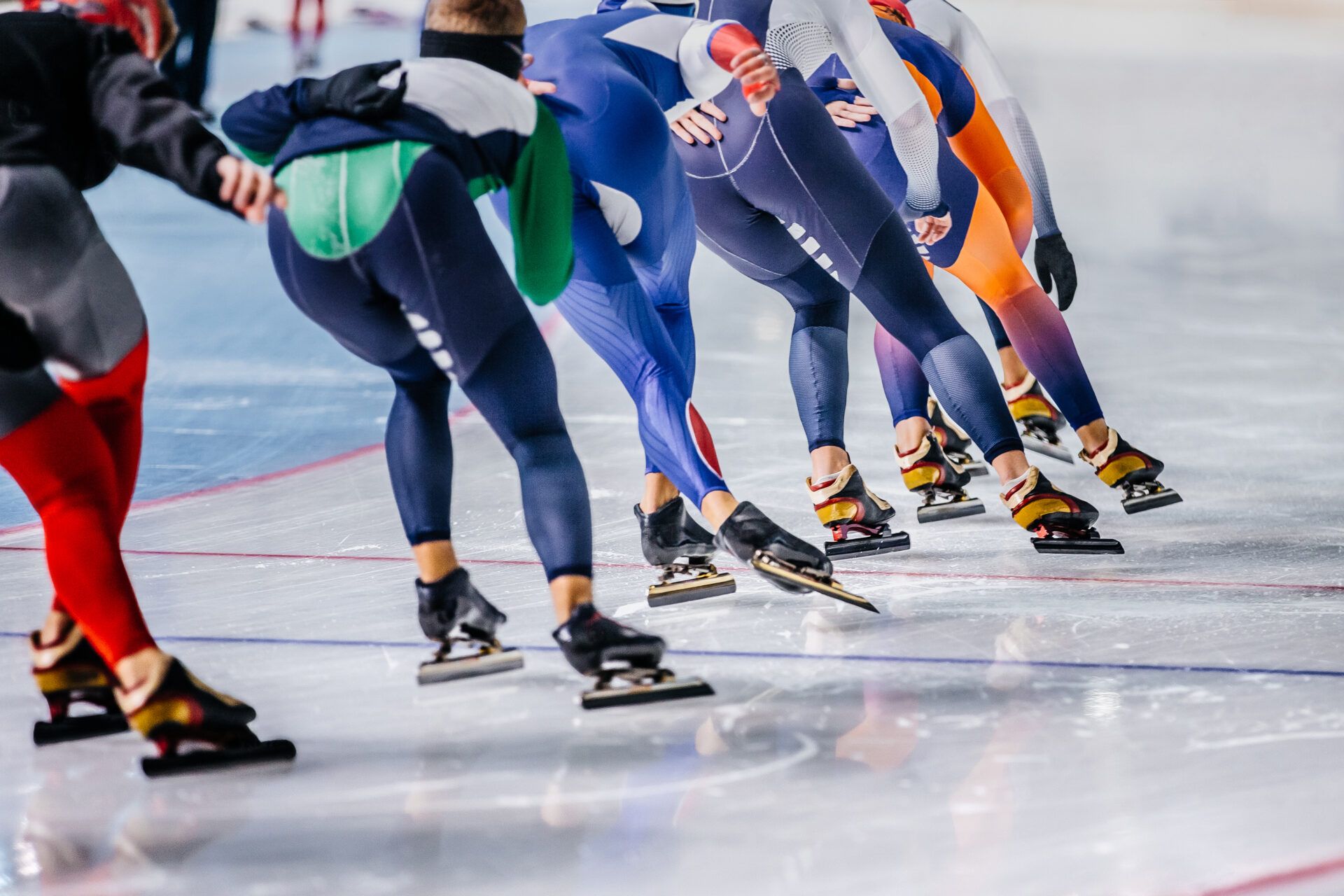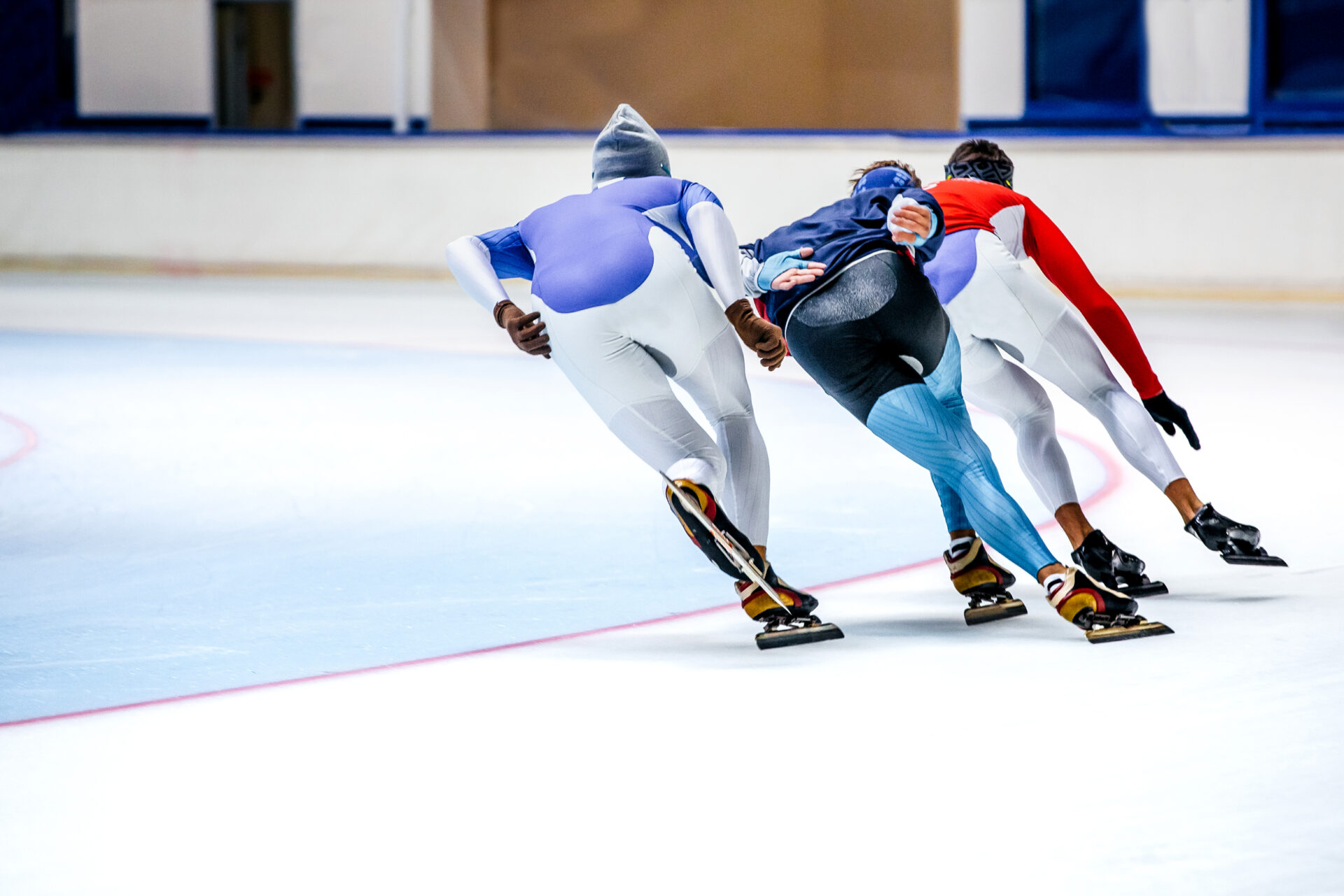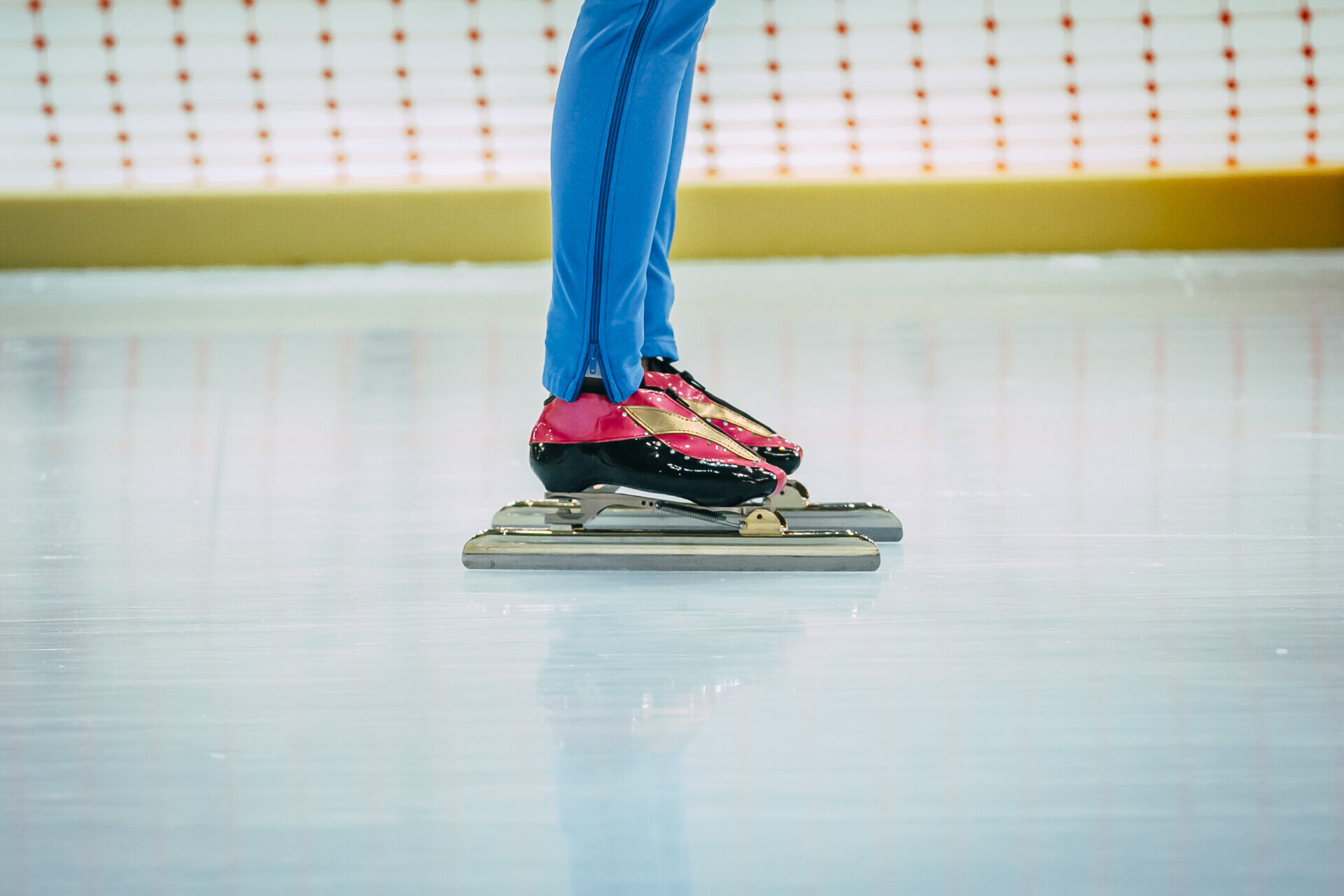Speed skating: history, rules and anecdotes
Why should you be interested in speed skating?
Because speed skating is a spectacular sport that combines power, endurance and technical mastery! Athletes reach impressive speeds, in races where every step counts. It’s a demanding and impressive Olympic sport, where concentration and precision make all the difference. Whether you’re a sports fan or simply curious, it’s hard to remain indifferent to such a demonstration of speed and control.
👉 In this article :
- A dive into the history of speed skating
- Some surprising fun facts
- And above all, a simple explanation of the events and rules to help you understand how a speed skating race is run.
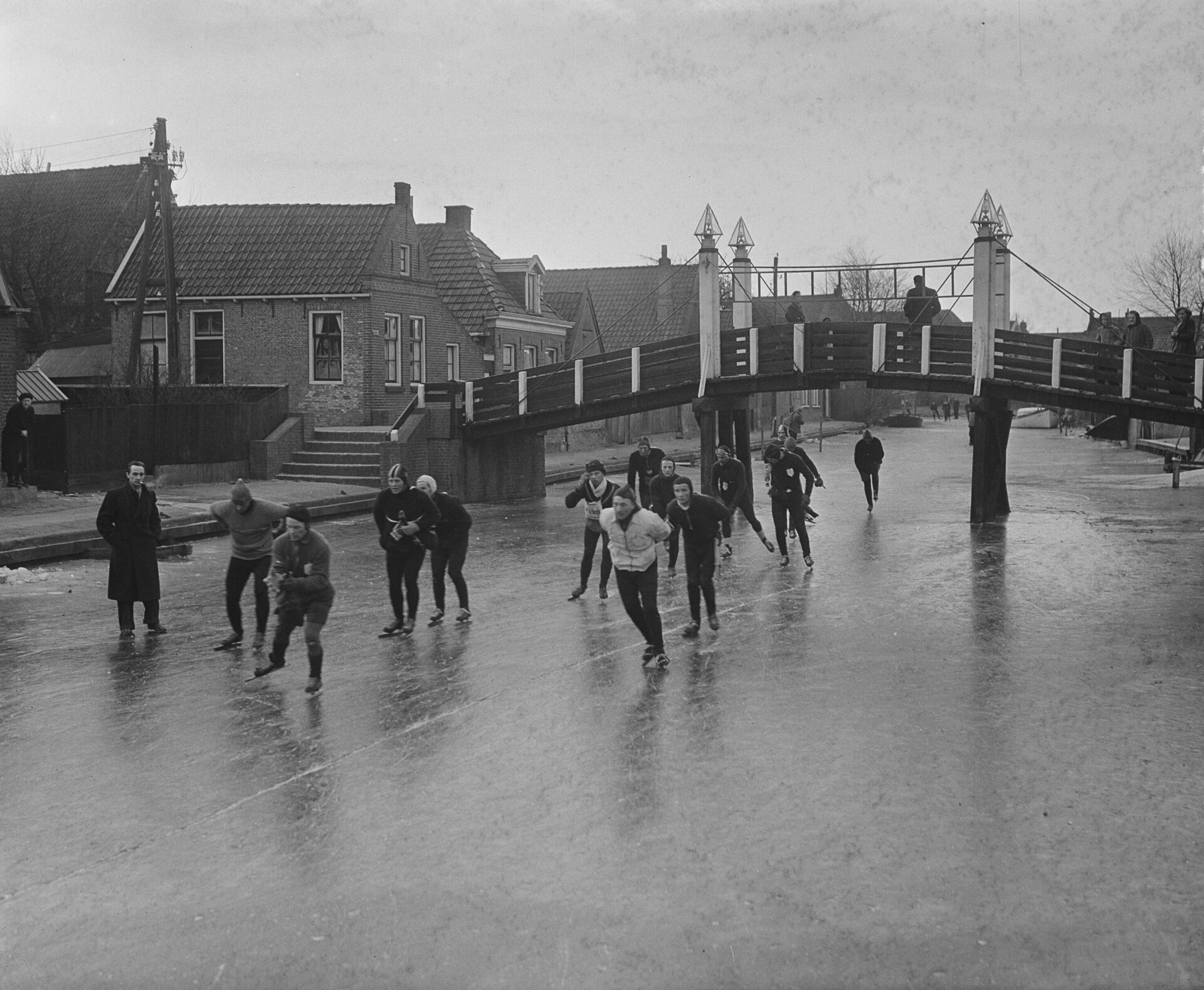
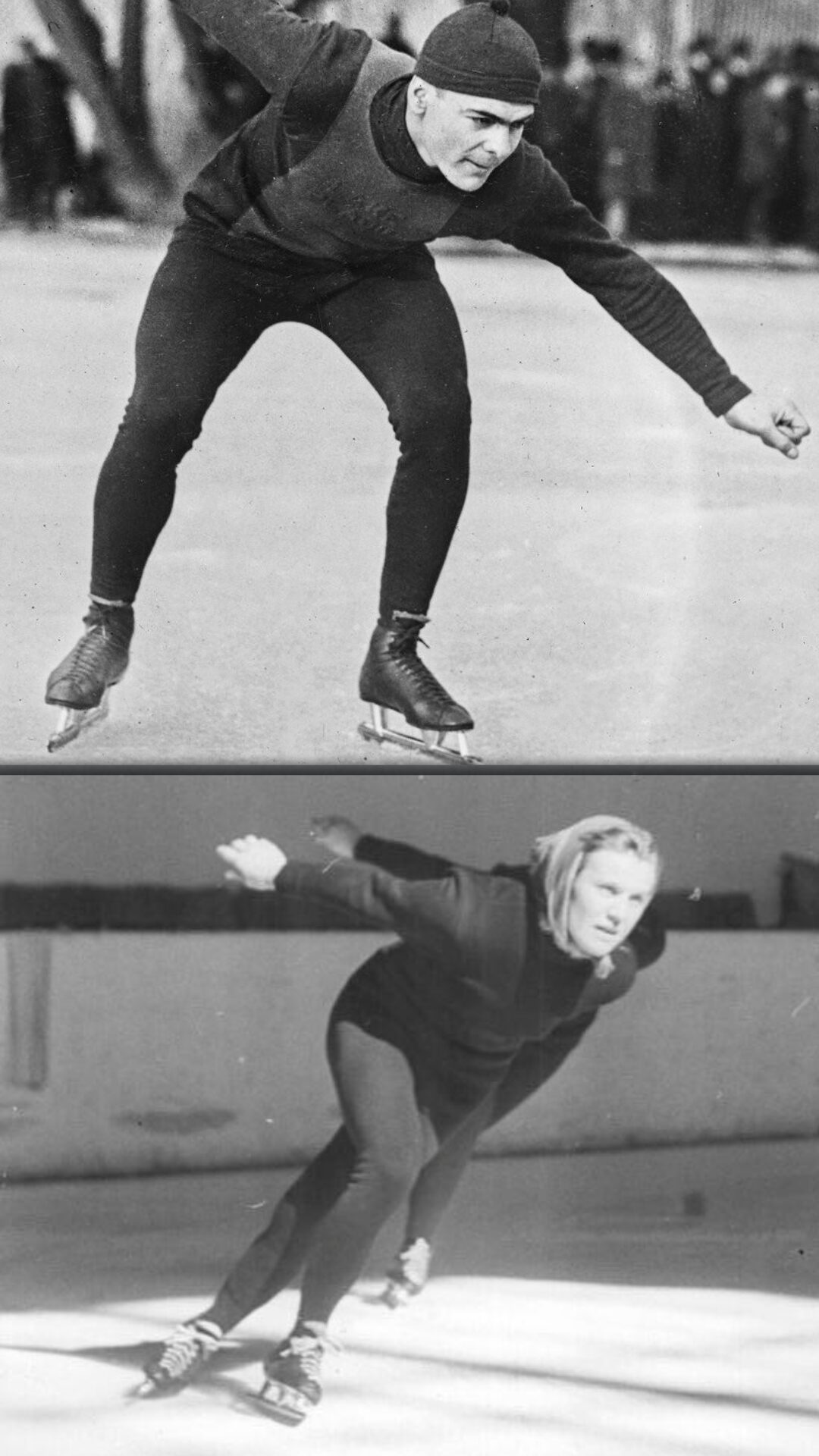
The history of speed skating
Speed skating is one of the oldest winter sports. It has its origins in the Nordic countries and the Netherlands, where people used rudimentary skates to move around on frozen lakes and canals as early as the Middle Ages. The first known official race took place in England in 1763, over a distance of 24 km between two villages.
At the end of the 19th century, the sport began to take shape: the International Skating Federation (ISU) was founded in 1892, making it one of the oldest sports federations in the world. The first official world championships were held the following year, in 1893, although international competitions had already been held a few years earlier.
Among the race formats that have marked the sport’s history are skate marathons, in which participants race in packs over distances of more than 40 km. The most famous of these is the Elfstedentocht, a legendary race covering almost 200 km on the frozen canals of Friesland in the Netherlands. Only held when the ice is at least 15 cm thick, it took place only 15 times between 1909 and 1997, bringing together up to 15,000 skaters in a spirit that blends performance and tradition.
Speed skating became an Olympic sport in 1924, at the first Winter Games in Chamonix. For several decades, only men’s events were contested, until the arrival of women at the 1960 Games.
Long dominated by the Netherlands, Norway and Russia, the sport has become increasingly international over the years. Canada, the United States and above all South Korea became major skating nations, notably with the emergence of a new discipline.
In 1992, short-track made its Olympic debut. Shorter, more intense and contested in a peloton, it offered a different approach to speed skating, focusing on strategy and close duels.
Even today, speed skating continues to evolve, while remaining true to its essence: meticulous racing, where every second counts and technical mastery makes all the difference.
Speed skating has been practiced in Canada since the XIXᵉ century, with the first races organized as early as the 1850s on the frozen rivers of Quebec. In 1887, the country founded the Amateur Skating Association of Canada, one of the oldest national sports federations, and organized its first official championships. The sport grew throughout the country, particularly in Alberta, Ontario, British Columbia and, of course, Quebec, where harsh winters and a strong ice culture were the norm. Today, Speed Skating Canada has thousands of members across the country. Canada shines particularly brightly in short-track, with several Olympic and world titles to its credit. Active clubs in every province and a solid network of competitions help train the next generation of skaters and maintain a high international standard.
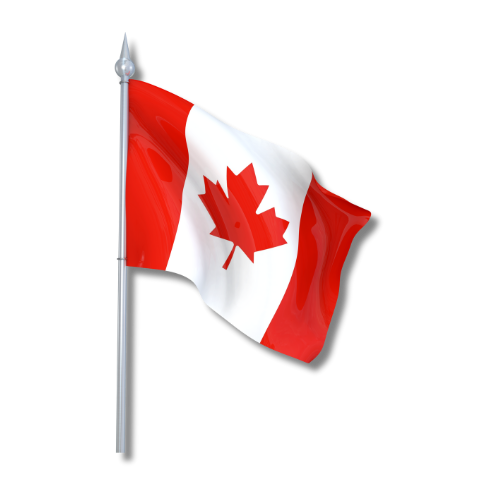

4 fun facts about speed skating
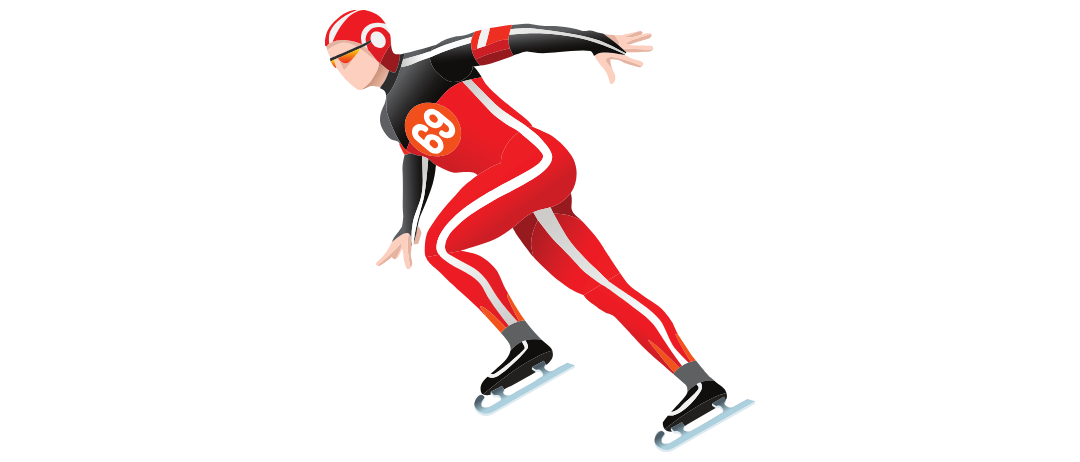

A professional speed skater goes on average 30% faster than a field hockey player: up to 60 km/h on the ice, compared with 40 km/h for the best field hockey players.

The Calgary Olympic Oval, built for the 1988 Olympics, has been dubbed “the fastest track in the world”: over 300 world records have been set here.

In 1998, the introduction of clap skates led to a flurry of records at the Nagano Games: the technology kept the blade in contact with the ice for longer.

In 1980, American Eric Heiden won all five events (from 500 m to 10,000 m) at the Lake Placid Games, an extraordinary feat that has never been equalled.

The main rules of speed skating

GOAL OF THE GAME
Speed skating is a sport in which the aim is to cover a given distance on ice as quickly as possible. It is divided into two main disciplines:
long-track, contested on a large oval track, and short-track, contested on a smaller rink.
In long-track, the aim is often to achieve the fastest time, making it a discipline focused on technique, power and consistency.
Short-track, on the other hand, relies more on placement, tactics and the management of duels, as the skaters all start together and the ranking depends solely on the order of finish.
Although very different in their approach, these two disciplines are part of the same Olympic sport, under the aegis of the International Skating Federation (ISU). They thus offer two complementary visions of speed on ice: one based on the stopwatch, the other on direct confrontation.
LAND AND EQUIPMENT
Speed skating is practiced on two types of track, depending on the discipline. In long track, races take place on a large 400-meter oval track, resembling an athletics track, but entirely covered in ice. In short-track, the track is much smaller (around 111 meters) and is laid out inside a classic field hockey rink.
Skaters use discipline-specific skates:
In long track, they wear clap skates, skates whose blade slightly detaches from the heel with each push. This system keeps the blade in contact with the ice for longer, enabling them to go faster.
In short-track, the skates are shorter and with a slightly curved blade, to facilitate tight turns at high speed.
All skaters wear tight-fitting overalls to reduce air resistance, as well as gloves, helmet, goggles and sometimes additional protection, especially in short-track, where the risk of falling is higher.
KEY RULES
Speed skating encompasses several types of races, each with its own precise rules. In long track, individual time trials are the most classic. Two skaters start at the same time, each in a separate lane, and must change lanes each lap to balance the distance covered. Ranking is based solely on time. The official distances are 500 m, 1000 m, 1500 m, 5000 m (men and women), and 10,000 m (men only).
These events are complemented by more strategic formats. In the team pursuit, two trios start from each side of the track and must stay together until the finish: the time is taken when the third skater crosses the line. The mass start brings together up to 16 skaters in a 16-lap race. Points are awarded for intermediate sprints, but it’s usually the final sprint, which is much more valuable, that determines the winner.
In short-track, races take place in packs on a 111-meter track. The main distances are 500 m, 1000 m and 1500 m, with relays as well: 3000 m for women, 5000 m for men, and a 2000 m mixed relay. Here, it’s not the time that counts, but the order of finish. Races progress in heats (quarters, semi-finals, finals). Because there are so many skaters on a small track, overtaking is frequent and contact is strictly regulated: any obstruction or dangerous maneuver can result in disqualification.
Come and play sports with us!
🎉 Focus on BougeBouge events 🎉
📅 On the programme: sport for all !
-
- BOUGEBOUGE BEACONSFIELD 2025 (13 /07/2025 ) : 1, 2 or 5 km turf course in Centennial Park, on the marina’s waterfront – a fun way to get moving with family and friends.
- MARATHON BOUGEBOUGE ET FESTIVAL DE VERDUN 2025 (14/09/2025): come and enjoy the mild September temperatures on a Boston-qualifying, Gold-certified course, with distances for all, from 1 km to 42.2 km.
- BOUGEBOUGE WAKEFIELD COURSE DU PONT COUVERT 2025 (12/10/2025):Discover the covered bridge and Gatineau Park during a friendly event with courses of 3, 5, 10 or 21.1 km, perfect for getting active with family and friends.
- BOUGEBOUGE KIRKLAND 2025 (19/10/2025) : Participate in BougeBouge Kirkland this fall and take up the 1 to 21.1 km challenge in a friendly and colourful atmosphere, solo, with family or friends.
Whether you’re an avid runner, an outdoor enthusiast or simply looking for a festive occasion, the upcoming BougeBouge events will provide you with a unique sporting experience in every corner of Quebec. So get set, get ready, get moving!🏃♀️🎉
Book your place now!
And to make sure you don’t miss a thing, you can follow us on our social networks!


